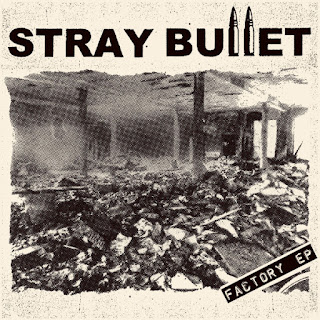The following post was originally published on 6/29/08.One of the more rewarding aspects of this dissertation, for me, has been learning a decent amount about South Africa and that nation's social and political history. As I have mentioned before, I had not initially planned on writing a dissertation specifically on J. M. Coetzee. In fact, I had assumed he would not be the subject of much more than a fifth of the project. Not surprisingly, then, my interest in the author had little do do with his status as a South African writer. As the focus of my dissertation has narrowed into a single author study, however, I have had to read quite a bit of material related to a place and an epoch to which I hadn't paid as much attention as I have to those a bit closer to home. And this has been surprisingly fulfilling. I have always had a predilection for Scandinavian history and culture and have more than a passing interest in the sociological aspects of circumpolar studies, so shifting my attention to a country like South Africa has certainly been a wholly new as well as enlightening and enriching experience.
Of course, as a literature graduate student, I have spent a significant amount of time reading postcolonial literature and theory and I have even pursued those studies beyond the confines of the classroom in my own leisure reading, so I am well acquainted with much of the critical and philosophical language one finds in the criticism surrounding J. M. Coetzee's fiction. Words like alterity, the other, and liminality (and the concepts they signify) have long been part of my academic vocabulary, but this project has given my understanding a much more nuanced texture, which I appreciate.
Of the central concerns of postcolonial studies, not surprisingly, is the concept of the border, the subject of the essay I read yesterday afternoon. As Grant Farred asserts, "the border [is] the meeting of difference," the site of hybridity and conflict, a physical or metaphysical plain in which the familiar mingles with the foreign (16). Farred, like several other commentators, views
Disgrace as a novel problematically situated "on the historical frontier" of the Eastern Cape, the "site where race, racism and race relations are most deeply embedded, most resistant to being reconstructed" (17). The "psycholandscape" that comes into being in such a historically-contested region (the indigenous population, Afrikaner Trekkers, and British colonists have a long history of bloody conflict in the area) is one in which "change - the dominant rhetoric in post-apartheid South Africa - comes last, not first" (17). It is here that David Lurie, arguably an embodiment of pre-apartheid white privilege, comes into direct conflict with the cultural and social reconfigurations of the "new South Africa," as embodied by the increasingly powerful figure of Petrus. Of course, Lucy, David's daughter, also figures prominently in Farred's essay. Consistent with the negative (which should not be confused with "poor") reading of the novel that he
articulates elsewhere, Farred argues that "
Disgrace transforms the frontier into a site that is even more disturbing because it functions not through confrontation but complicity . . . the novel leaves the women with no option but to exchange the violation of their bodies for a minimal safety," a particularly dismal version of "post-apartheid white acquiescence" (18):
At the borderlines, at the fringes of the new society, subjects rely not on new inscriptions for and of the land, but on older forms of exchange: the tacit compact: violence is endured, vague safety is expected. Life at the border works not because of the regognition that the language of both liberation and reconciliation has failed. Historical changes can be absorbed and transformed into new racial codes, new forms of enfranchisements, reinstating older forms of violence. (19)
Though his reading is decidedly bleaker than most, Farred's analysis of Disgrace is consistently intelligent and thought-provoking and, for readers interested in understanding why so many South Africans found Coetzee's version of the Rainbow Nation so difficult to swallow, an extremely useful resource.
I also read an interesting review of Andre Brink's The Rights of Desire in the Norwegian journal Vinduet. I don't know if Norwegian literary criticism is inherently clearer than its anglophone counterpart, but despite it being written in my second language, Kristen Skare Orgeret's essay is an extremely lucid example of literary criticism. Although Orgeret focuses on Brink's novel, she devotes a significant amount of attention to Coetzee's novel (from which Brink draws the title for his book). Although her reading of Disgrace is not quite as bleak as Farred's, Orgeret does view the novel as an extremely dark portrait of contemporary South African society. She does, however, conclude that "[s]elv om baade Vanaere og Attraaens rett er moerke, brutale og paa mange maaater pessimiske fremstillinger av regnbuenatsjonen som gikk tapt, handler de ogsaa om haap og om muligheten ti aa leve ansvarlig med andre," echoing the sentiments of many anglophone critics. Of her many insightful comments on both novelists, readers interested in a comparative reading of the two books may find Orgeret's assertion that while Brink's Ruben Olivier represents the Afrikaner's position in the new South Africa, David Lurie embodies the British-descended part of South African society to be most valuable. There is, however, much more to be found in the essay (for those readers who can read Norwegian, at least).
For tomorrow: Read another essay.
Work Cited
Farred, Grant. "Back to the Borderlines: Thinking Race Disgracefully." scrutiny2 7.1 (2002): 16-19.
Orgeret, Kristin Skare. "Der Smaafugl skjelver."
Vinduet 18 March 2002.
Available online.




Comments
Post a Comment